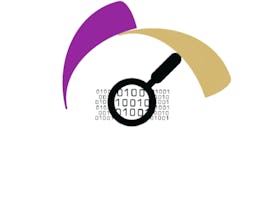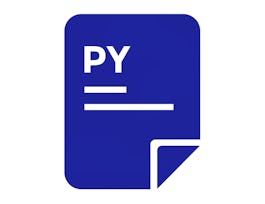This course is the final course in a three part algebra sequence, In this course, students extend their knowledge of more advanced functions, and apply and model them using both algebraic and geometric techniques. This course enables students to make logical deductions and arrive at reasonable conclusions. Such skills are crucial in today's world. Knowing how to analyze quantitative information for the purpose of making decisions, judgments, and predictions is essential for understanding many important social and political issues. Quantitative Skills and Reasoning provides students the skills needed for evaluating such quantitatively-based arguments.



Algebra: Elementary to Advanced - Polynomials and Roots
This course is part of Algebra: Elementary to Advanced Specialization

Instructor: Joseph W. Cutrone, PhD
Top Instructor
Sponsored by ITC-Infotech
7,621 already enrolled
(135 reviews)
Skills you'll gain
Details to know

Add to your LinkedIn profile
8 assignments
See how employees at top companies are mastering in-demand skills

Build your subject-matter expertise
- Learn new concepts from industry experts
- Gain a foundational understanding of a subject or tool
- Develop job-relevant skills with hands-on projects
- Earn a shareable career certificate


Earn a career certificate
Add this credential to your LinkedIn profile, resume, or CV
Share it on social media and in your performance review

There are 5 modules in this course
The ubiquitous occurrence of the exponential function in pure and applied mathematics has led mathematician W. Rudin to opine that the exponential function is "the most important function in mathematics". In applied settings, exponential functions model a relationship in which a constant change in the independent variable gives the same proportional change (i.e., percentage increase or decrease) in the dependent variable. This occurs widely in the natural and social sciences, as in a self-reproducing population, a fund accruing compound interest, or a growing body of manufacturing expertise. Thus, the exponential function also appears in a variety of contexts within physics, chemistry, engineering, mathematical biology, and economics.
What's included
2 videos5 readings2 assignments
In mathematics, a polynomial is an expression consisting of variables (also called indeterminates) and coefficients, that involves only the operations of addition, subtraction, multiplication, and non-negative integer exponentiation of variables. Polynomials generalize our linear and quadratic functions that we have studied so far. An example of a polynomial is x^2 − 4x + 7. Polynomials appear in many areas of mathematics and science. For example, they are used to form polynomial equations, which encode a wide range of problems, from elementary word problems to complicated scientific problems; they are used to define polynomial functions, which appear in settings ranging from basic chemistry and physics to economics and social science; they are used in calculus and numerical analysis to approximate other functions.
What's included
2 videos6 readings2 assignments
In this module, we will learn about roots of real numbers. Roots arise naturally as solutions to the polynomial equation x^n - a = 0. Square roots help to solve quadratic polynomials. The square root of a nonnegative number is used in the definition of Euclidean distance, as well as in generalizations such as Hilbert spaces. It defines an important concept of standard deviation used in probability theory and statistics. It has a major use in the formula for roots of a quadratic equation; quadratic fields and rings of quadratic integers, which are based on square roots, are important in algebra and have uses in geometry. Square roots frequently appear in mathematical formulas elsewhere, as well as in many physical laws. Generalizing square roots lead to n-th roots, their properties, and applications.
What's included
2 videos4 readings2 assignments
What's included
1 video3 readings1 assignment
Congratulations on reaching the final exam! This final assessment will be cumulative in nature, covering all aspects of the course. Use this final as a teaching tool: justify what you know and identify areas for improvement. Use scrap paper as you take this final. Try to use any formula sheets or outside resources as a tool and not a crutch. Check your answers before you submit. After the test, review any incorrect answers to find your mistakes. Try to separate "silly" mistakes from the more substantial mistakes in understanding. Good luck!
What's included
1 assignment
Instructor

Offered by
Why people choose Coursera for their career




Learner reviews
135 reviews
- 5 stars
90.37%
- 4 stars
8.14%
- 3 stars
1.48%
- 2 stars
0%
- 1 star
0%
Showing 3 of 135
Reviewed on May 17, 2022
This course is very informative. I think this will help my students
Reviewed on Sep 12, 2021
I liked the way of explanation very simple and understandable
Reviewed on Sep 26, 2022
These 3 algebra courses are vextremely well structured and articulted. There is not a boring moments in these videos.
Recommended if you're interested in Math and Logic

Johns Hopkins University

University of Colorado System

University of Colorado System

Open new doors with Coursera Plus
Unlimited access to 10,000+ world-class courses, hands-on projects, and job-ready certificate programs - all included in your subscription
Advance your career with an online degree
Earn a degree from world-class universities - 100% online
Join over 3,400 global companies that choose Coursera for Business
Upskill your employees to excel in the digital economy



